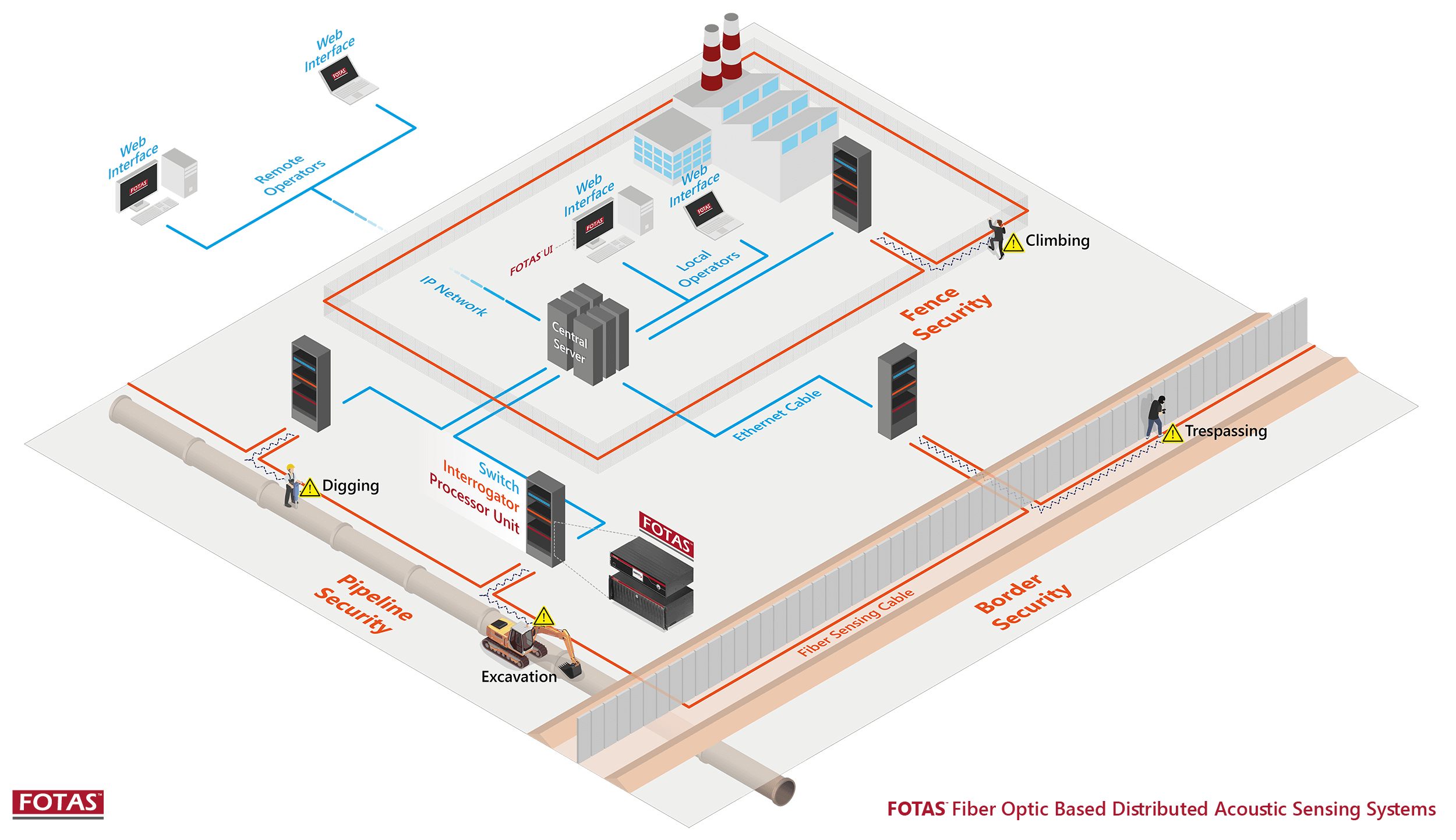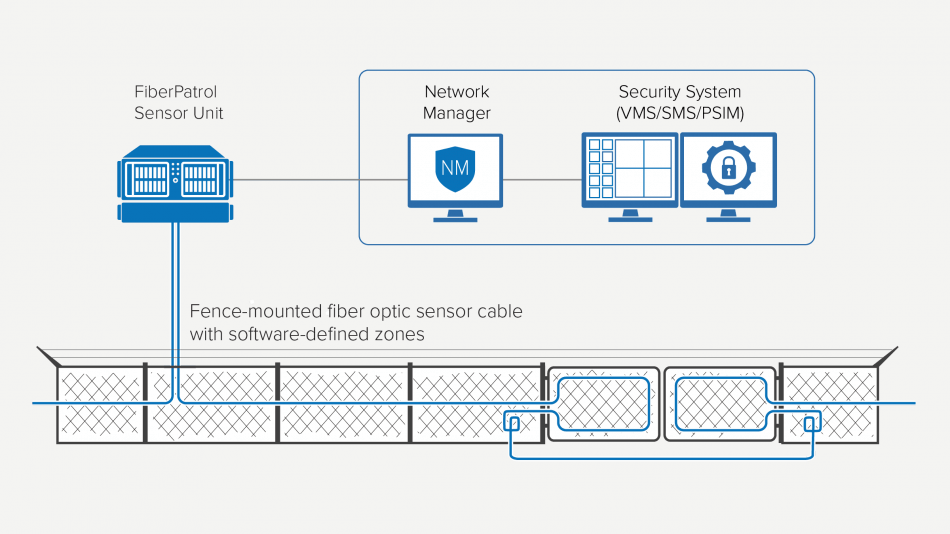Key Aspects of Fiber Optics Infrastructure for Security Installations You Need to Understand
Key Aspects of Fiber Optics Infrastructure for Security Installations You Need to Understand
Blog Article
Enhance Your Safety With Advanced Fiber Optic Security Equipments
In an age where safety is extremely important, innovative fiber optic protection systems offer an engaging remedy for boosting safety and security throughout different atmospheres. What ramifications do these developments hold for future safety steps?
Benefits of Fiber Optic Safety And Security
Harnessing the advantages of fiber optic modern technology dramatically boosts safety systems across various applications. One of the key advantages is the enhanced bandwidth ability, permitting for the transmission of big amounts of information at high rates. This is especially important for real-time video surveillance, where high-resolution feeds can be sent out without latency, making sure instant response capacities.
Furthermore, fiber optics show remarkable resistance to electromagnetic disturbance, which is crucial in environments with possible signal interruptions. This reliability makes certain constant efficiency in critical safety operations. Fiber optic cable televisions are much less prone to touching and unapproved access compared to traditional copper wiring, therefore enhancing information integrity and privacy.
One more notable advantage is the resilience of fiber optic systems; they are a lot more resistant to ecological variables such as moisture, temperature level variations, and corrosive compounds. This strength translates to reduce upkeep prices and longer lifespans for safety and security installments.
Lastly, the lightweight nature of fiber optic cords promotes easier installation and directing, especially in intricate infrastructures (fiber optic security system). Ultimately, the integration of fiber optic innovation right into protection systems not just reinforces protection steps however likewise enhances functional performance
Trick Attributes to Consider
When evaluating fiber optic safety and security systems, a number of essential functions need to be thought about to make sure ideal efficiency and efficiency. Assess the system's discovery array and level of sensitivity; a comprehensive range allows for checking big areas, while high sensitivity ensures that also minor disturbances are identified without delay.
Next, consider the assimilation abilities of the system. A fiber optic safety and security system should flawlessly user interface with existing safety and security actions such as electronic cameras and alarms, producing a natural safety and security network.
Longevity and environmental resistance are also crucial attributes. Make sure that the system is developed to hold up against extreme climate condition and potential physical hazards, as this will lengthen its operational lifespan.

Finally, check into the scalability of the system. A durable fiber optic safety system should be conveniently expandable to suit future requirements without significant overhauls. By meticulously thinking about these attributes, you can choose a fiber optic security option that enhances security and security in your atmosphere.
Installation Process Review
To effectively apply a fiber optic safety and security system, an organized installation procedure is essential. This procedure starts with a thorough site analysis to determine the certain protection needs and to determine optimum locations for fiber optic cords and protection devices. Following this evaluation, the installment group will establish a thorough plan, including cord paths, necessary devices, and conformity with neighborhood regulations.
Next, the setup includes laying the fiber optic wires, guaranteeing they are protected from environmental elements and physical damages. Appropriate handling strategies are critical, as fiber optic cable televisions are sensitive and can be quickly damaged. After the cabling is set up, adapters and discontinuations are diligently finished to make certain signal honesty.
The subsequent phase is composed of setting up safety and security devices such as electronic cameras, activity detectors, and security system, all integrated with the fiber optic network. Strenuous testing is conducted to validate that all elements are functioning appropriately and to make More Help sure optimal efficiency.

Contrasting Fiber Optic to Traditional Systems
The development of safety and security technology has actually brought about substantial improvements in the comparison between fiber optic systems and typical copper-based systems. Fiber optic systems make use of light to transfer data, supplying remarkable data transfer and speed contrasted to their copper equivalents. This results in boosted information transmission capabilities, making optical fiber suitable for high-resolution video security and real-time tracking.
Additionally, fiber optic wires are immune to electromagnetic disturbance, decreasing the likelihood of signal deterioration brought on by exterior aspects. This characteristic makes certain constant performance, also in challenging settings. On the other hand, typical copper systems are much more at risk to interference, bring about prospective susceptabilities in safety and security applications.
Durability is one more benefit of fiber optic systems. They are less susceptible to damage from environmental variables such as moisture and temperature level fluctuations, which can jeopardize copper circuitry. Fiber optics are lighter and thinner, permitting for less complicated installment and reduced physical footprint.
Nonetheless, conventional systems often tend to have reduced preliminary expenses, making them eye-catching for budget-conscious jobs. While fiber optic systems might call for a higher in advance financial investment, their lasting visit this page advantages-- such as lower maintenance costs and greater dependability-- usually surpass the initial cost, placing them as a remarkable selection for modern-day protection requirements.
Future Trends in Protection Innovation
Emerging trends in protection modern technology are poised to change the landscape of security and risk discovery - fiber optic security system. As organizations progressively face sophisticated dangers, innovations such as man-made intelligence (AI) and artificial intelligence (ML) are coming to be indispensable to security systems. These technologies boost the capability of fiber optic systems by enabling real-time data evaluation, identifying abnormalities, and automating actions to possible breaches
Additionally, the integration of the Net of Things (IoT) is revolutionizing security frameworks. IoT devices can offer extensive situational understanding and help More Bonuses with smooth interaction in between different safety parts. This interconnectedness enables extra efficient surveillance and faster occurrence response times.
Biometric authentication is additionally getting energy, providing a greater degree of safety through one-of-a-kind physical features. As this modern technology progresses, it is most likely to be incorporated right into fiber optic systems for boosted gain access to control.
Verdict
In conclusion, progressed fiber optic safety systems stand for a substantial innovation in safety and security and surveillance technology. Their exceptional bandwidth, resistance to disturbance, and resilience facilitate dependable monitoring and information stability. As these systems integrate AI and IoT capabilities, they boost the general protection structure, guaranteeing durable security for properties. The change from traditional systems to fiber optic services reflects an expanding pattern towards more efficient and reliable safety and security actions in an increasingly intricate technical landscape.
Report this page